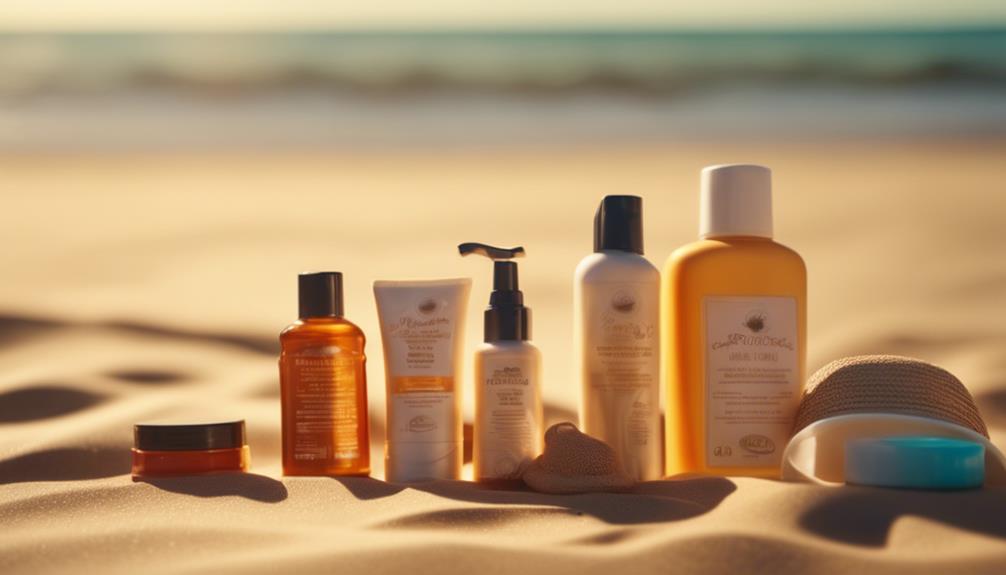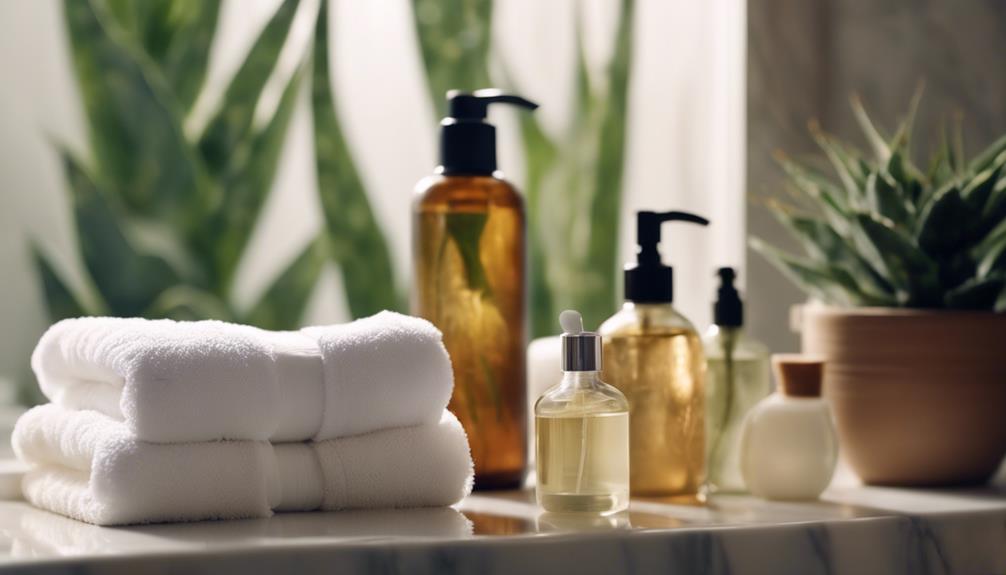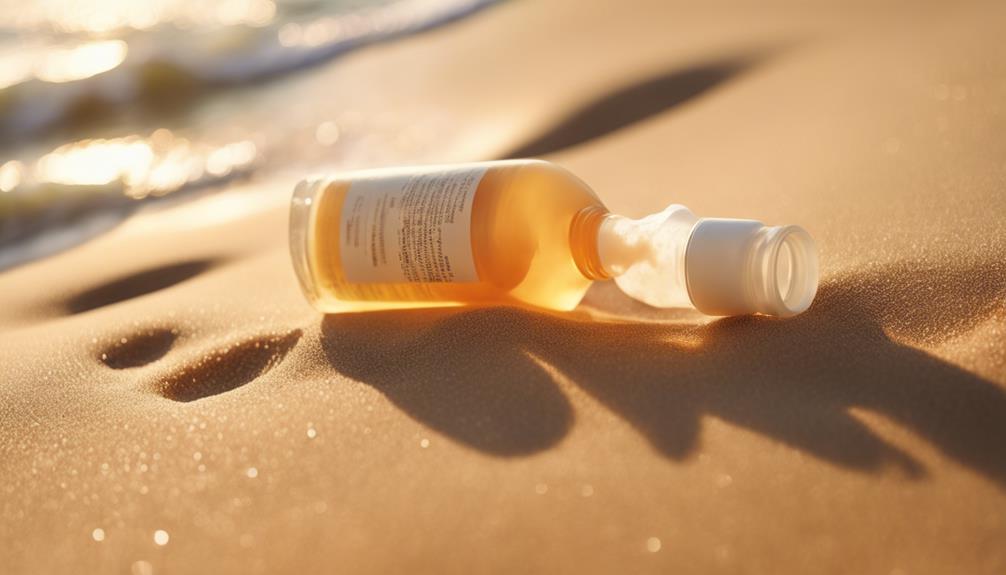To master your tanning bed experience, start by understanding your skin type; this helps prevent burns and promotes an even tan. Always exfoliate before tanning for smoother skin and better product absorption. Choose the right tanning lotion designed for your specific needs, and remember to apply SPF, even indoors. Schedule short sessions to gauge your skin's response and maintain a consistent routine. After tanning, moisturize to keep your skin hydrated and use aloe vera to soothe any redness. Avoiding common mistakes can enhance your results. Discovering more tips can further enhance your tanning journey.
Key Takeaways
- Understand your skin type to choose appropriate tanning products and avoid burns during sessions.
- Prepare your skin by exfoliating and moisturizing before tanning for an even application.
- Start with short tanning sessions and gradually increase duration to assess skin response.
- Always use a tanning lotion with SPF, even in tanning beds, for added protection.
Understanding Skin Type
Understanding your skin type is essential for safely and effectively using tanning beds, as it directly impacts how your skin responds to UV exposure.
If you have fair skin, you may lack melanin, which increases your risk of burning, so you need to be cautious. Sensitive skin requires even more attention, as it can react adversely to UV rays.
Consulting a dermatologist can help you gain insights into your specific skin type and tailor your tanning approach accordingly.
Before your tanning session, prepare your skin: exfoliate 24 hours prior, shave 1-2 days ahead, and use non-oil-based moisturizers.
Remove makeup, perfume, and jewelry to guarantee a clean canvas for ideal tanning results.
Importance of Exfoliation
Exfoliating your skin before tanning smooths away dead cells, guaranteeing a more even and vibrant tan. This step is essential for maximizing your tanning results, as it allows for better absorption of tanning products. Not only does exfoliation help achieve a flawless finish, but it also prevents flakiness and patchiness post-tan.
| Benefits of Exfoliation | How to Exfoliate | When to Exfoliate |
|---|---|---|
| Smoother tan | Use a gentle scrub | 24 hours before tanning |
| Enhances product absorption | Exfoliate in circular motions | 1-2 times a week |
| Prevents uneven patches | Rinse thoroughly | Avoid after sunburn |
Incorporating these practices guarantees your skin looks its best, giving you that stunning glow you desire.
Choosing Tanning Products

Choosing the right tanning products can greatly enhance your results and guarantee a safe tanning experience.
Start by selecting lotions specifically designed for your skin type; moisturizing formulas will boost hydration while you tan.
Don't forget about SPF protection, even when tanning indoors.
Consult with tanning technicians at your salon for personalized product recommendations tailored to your needs.
Look for products that promote deeper and faster tanning, as well as post-tanning lotions that focus on skin care to maintain your results.
Remember, the right products not only improve your tan but also support skin health, ensuring you enjoy a radiant glow without compromising safety.
Your choices play a vital role in achieving the best possible outcome.
Optimal Tanning Practices
Using the right products sets the stage for perfect tanning practices that maximize your results while keeping your skin safe.
To guarantee a successful tanning experience, follow these ideal practices:
- Start with short sessions to gauge your skin's response.
- Schedule your tanning during morning or early afternoon for gentler UV exposure.
- Consult salon professionals for personalized session timing based on your skin type.
- Keep a consistent tanning schedule, aiming for twice-weekly sessions to maintain your glow.
Post-Tanning Care

To keep your skin vibrant and healthy after tanning, apply a moisturizer right away to lock in hydration and soothe any irritation. Aloe vera is a great choice for calming your skin and reducing redness.
Avoid hot showers; instead, opt for lukewarm water to prevent stripping moisture from your skin. Stay hydrated by drinking plenty of water, as hydration is key to maintaining your tan.
Wear loose clothing to allow your skin to breathe and recover comfortably. Within 24 hours, gently exfoliate to keep your tan looking even.
Consistent post-tanning care will prolong the life of your tan, ensuring that you enjoy a beautiful glow for as long as possible.
Common Mistakes to Avoid
Many people make the mistake of skipping skin preparation, which can lead to uneven tanning and irritation. To guarantee a smooth tanning experience, avoid these common pitfalls:
Neglecting to exfoliate: Dead skin can cause patchy results.
Choosing the wrong tanning product: Not all products suit every skin type.
Staying too long in the bed: Overexposure can lead to burns and discomfort.
Forgetting to moisturize after tanning: Hydration is key to prolonging your tan.
Tanning over sunburned skin: This can worsen irritation and damage.
Trending Tanning Topics

As you explore the latest trends in tanning, staying informed about new products and techniques can enhance your tanning experience and results.
Currently, intensifier lotions are gaining popularity for their ability to deepen your tan more effectively. Additionally, advancements in spray tan equipment offer quicker and more even applications, making them a great alternative for those seeking a sun-kissed glow without UV exposure.
It's also essential to prioritize tanning bed safety; always use protective eyewear and follow recommended session lengths.
Regularly updating your skincare routine with hydrating products can further improve your tan's longevity.
Frequently Asked Questions
How Often Should I Clean My Tanning Bed Equipment?
You should clean your tanning bed equipment after each use. This prevents bacteria buildup and guarantees a hygienic experience. Regularly maintaining cleanliness keeps the bed in good condition and enhances your overall tanning results.
Can I Share Tanning Lotion With Friends?
Sharing tanning lotion might seem harmless, but it's risky. You could transfer bacteria or irritants. Stick to your own products for safety, ensuring your skin remains healthy and free from potential reactions. Your skin deserves it!
What Should I Wear During a Tanning Session?
During a tanning session, wear loose-fitting clothing or a swimsuit to guarantee even exposure. Avoid jewelry that can create tan lines, and consider using a tanning-friendly outfit to maximize your results while staying comfortable.
Is Indoor Tanning Safe During Pregnancy?
It's generally advised that you avoid indoor tanning during pregnancy. The skin's increased sensitivity can lead to adverse reactions, and UV exposure might pose risks to your developing baby. Always consult your doctor for personalized advice.
How Do I Know if a Tanning Bed Is Clean?
Like a knight inspecting armor before battle, check for cleanliness in tanning beds. Look for recent cleaning signs, ask staff about maintenance routines, and trust your instincts—if it feels off, seek a different bed.
Conclusion
So, as you immerse yourself in your tanning bed experience, remember to tailor your approach to your skin type and prep properly.
Imagine Sarah, who exfoliated and applied a quality tanning lotion before her session. She emerged with a flawless, sun-kissed glow that turned heads at her summer party.
By following these tips and avoiding common pitfalls, you can achieve stunning results just like her.
Embrace the journey, and let your beautiful bronzed complexion shine!









